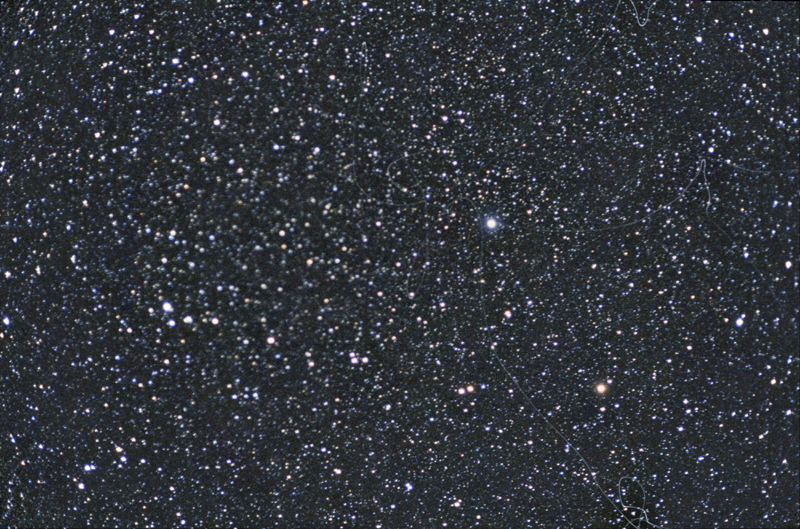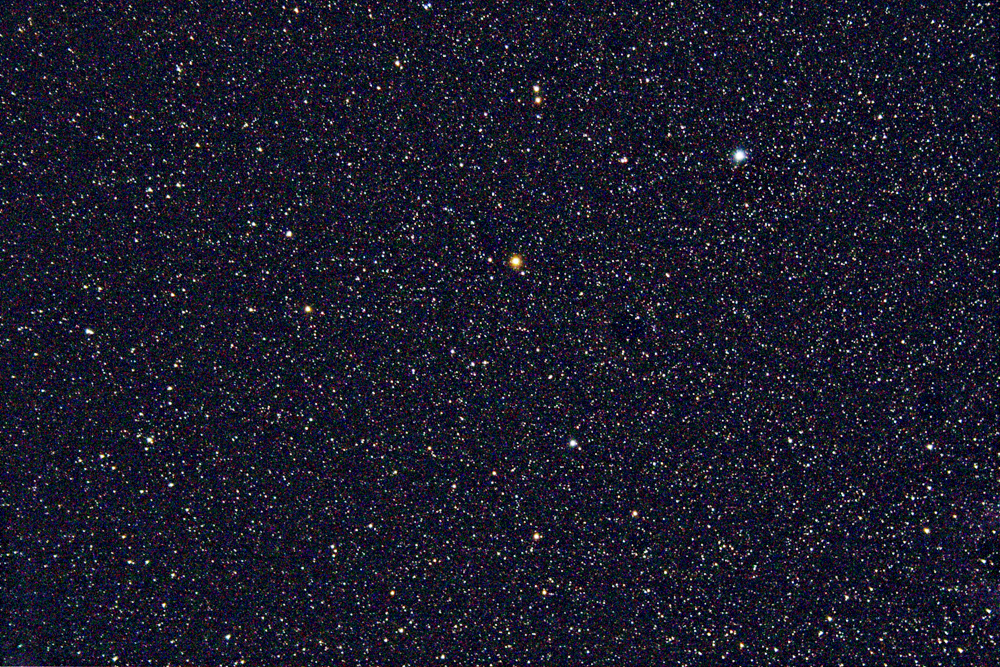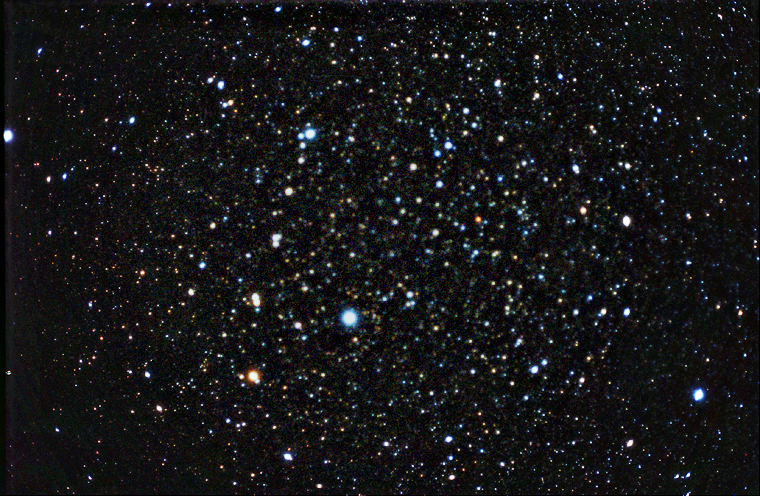
30 minutes exposure, Fuji Super HG II 400 film. 50mm f/2.0 Nikkormat lens.

Grus is a small constellation situated to the south of Fomalhaut. Since it is situated so far south, (dec -36 - -55) it is not well known to northern hemisphere observers. However from the southern hemisphere it is a well known and easily recognised constellation and contains many interesting deep-sky objects. The two brightest stars are alpha, also known as Alnair (right) and beta. (left) These two stars are a good colour contrast, with alpha being a B5 main-sequence star and beta an M3 giant. In the same field as alpha is the 10th magnitude galaxy NGC 7213. The photograph has been defocused a little to show the star colours better.
The bright star on the left of the photograph is Fomalhaut, while the the bright star to the lower right is alpha tucanae. A little above this star is alpha indi. The bright star at the end of the line of naked-eye double stars which mark the neck of the crane is gamma. 2 degrees to the west of this star is the interesting planetary nebula IC 5148.
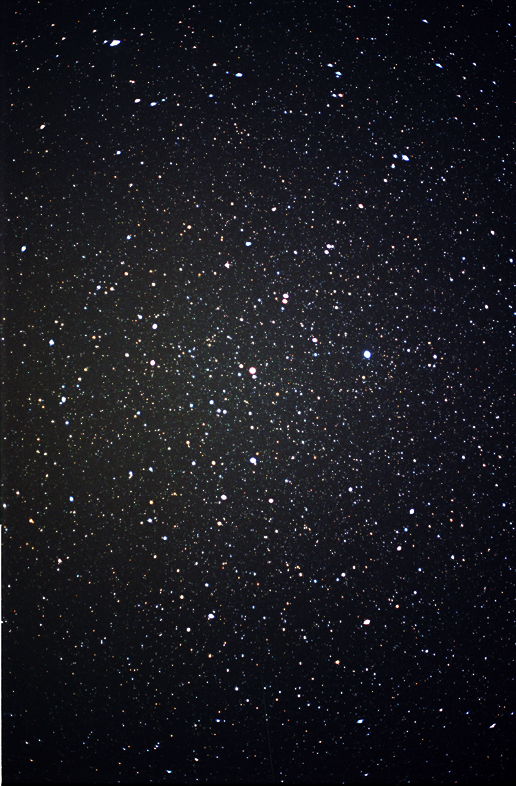
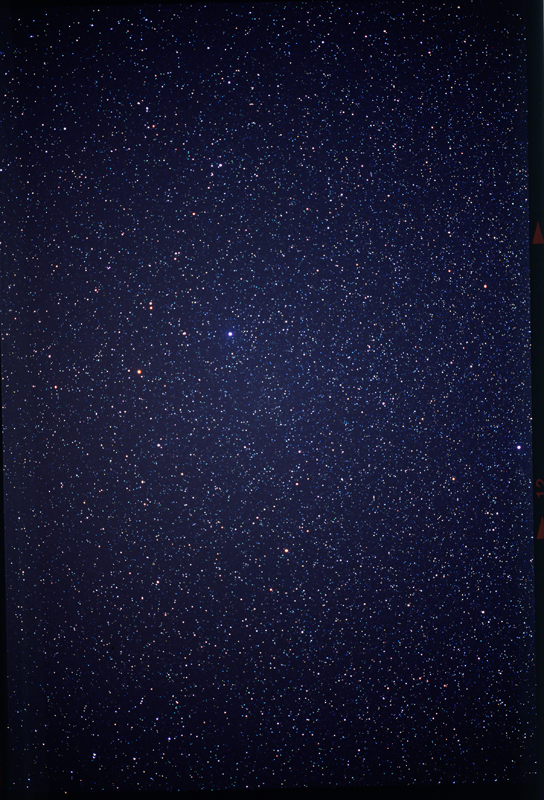
30 minutes exposure, Kodak Ektachrome 400 film. 100mm f/2.8 Minolta lens.
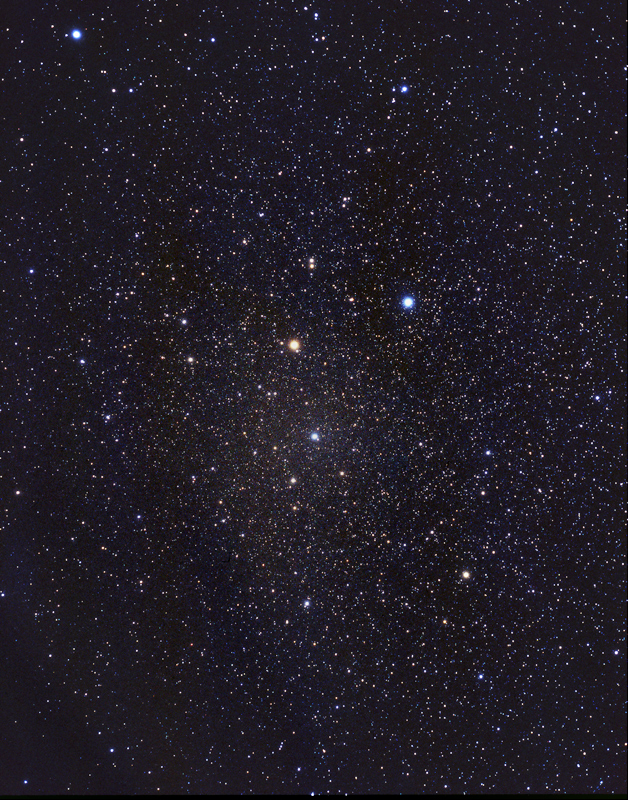
30 minutes exposure, AGFA HDC 400 film. 120mm f/2.8 Mimya lens.
